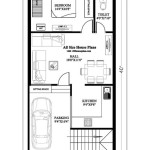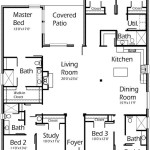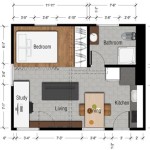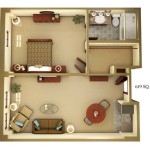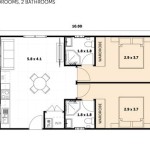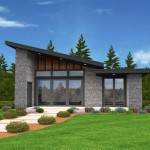```html
Exploring 900 Sq Ft House Plans: Efficient Living in Compact Spaces
The demand for smaller, more efficient housing options has steadily increased over the years. This trend reflects a growing awareness of the benefits associated with downsizing, including lower mortgage payments, reduced utility costs, and minimized environmental impact. Consequently, 900 sq ft house plans have become an attractive solution for individuals, couples, and small families seeking affordable and sustainable living spaces. These plans necessitate careful consideration of layout, functionality, and design to maximize comfort and utility within a relatively limited footprint.
Designing a 900 sq ft house requires a strategic approach. Every square inch must be thoughtfully allocated to ensure comfortable living without sacrificing essential amenities. Open-concept layouts are often employed to create a sense of spaciousness, while multi-functional furniture and built-in storage solutions help to optimize the use of available area. Furthermore, natural light and strategic placement of windows can significantly impact the perception of size and airiness within the home.
Key Considerations for 900 Sq Ft House Plans
Several crucial factors must be considered when selecting or designing a 900 sq ft house plan. These factors directly influence the livability and practicality of the dwelling. Attention to detail in these areas can transform a small space into a highly functional and enjoyable home.
1. Layout Optimization: Maximizing Space and Flow
The floor plan is the backbone of any house design, and its importance is amplified in smaller homes. An efficient layout is essential for creating a comfortable and functional living environment in a 900 sq ft space. Open-concept designs, which combine the living room, dining area, and kitchen into a single, unified area, are a popular choice. This arrangement fosters a sense of spaciousness and promotes social interaction. However, it is crucial to delineate distinct zones within the open space using furniture arrangement, area rugs, or subtle changes in flooring.
Traffic flow is another critical aspect of layout optimization. Walkways should be wide enough to accommodate comfortable movement, and furniture should be arranged to avoid creating bottlenecks. Consider the placement of doors and windows to ensure they do not obstruct traffic paths or limit furniture placement options. Furthermore, minimizing hallways can free up valuable square footage for living areas. Utilizing pocket doors or sliding doors instead of traditional swing doors can also save space and improve circulation.
Vertical space should not be overlooked. Utilizing lofts for sleeping areas or storage can significantly expand the usable area within the home. Tall ceilings can also create a sense of spaciousness and allow for the incorporation of high windows to maximize natural light. Strategic use of shelving and vertical storage solutions can further optimize space utilization.
2. Storage Solutions: Integrating Functionality and Aesthetics
Adequate storage is paramount in a small home. Clutter can quickly overwhelm a limited space, making it feel cramped and uncomfortable. Integrated storage solutions are essential for maintaining a tidy and organized living environment. Built-in shelving, cabinets, and drawers can maximize storage capacity without sacrificing valuable floor space. Consider incorporating storage under stairs, in window seats, and along walls.
Multi-functional furniture, such as sofa beds, storage ottomans, and nesting tables, can also help to optimize storage and functionality. These pieces can serve multiple purposes, reducing the need for separate items and conserving space. Wall-mounted organizers and shelves can keep items off the floor, further contributing to a clutter-free environment.
Effective storage design involves careful planning and consideration of individual needs and lifestyle. Assess the types of items that need to be stored and design storage solutions that are specifically tailored to accommodate them. Prioritize accessibility and ease of use. Consider incorporating features such as pull-out drawers, adjustable shelves, and clear labeling to facilitate organization and retrieval.
3. Natural Light and Ventilation: Enhancing Comfort and Well-being
Natural light and ventilation are crucial for creating a comfortable and healthy living environment in any home, particularly in smaller spaces. Ample natural light can make a room feel larger and more inviting, while proper ventilation helps to regulate temperature and improve air quality. Strategic placement of windows is essential for maximizing natural light and ventilation.
Consider incorporating large windows or skylights to flood the interior with natural light. Orient windows to capture sunlight throughout the day. Utilize light-colored paint and finishes to reflect light and further enhance the brightness of the space. Mirrors can also be used strategically to reflect light and create the illusion of more space.
Proper ventilation is equally important. Ensure that windows are operable and can be opened to allow for cross-ventilation. Consider installing ceiling fans or exhaust fans to improve air circulation. Adequate ventilation helps to remove moisture, odors, and pollutants, creating a healthier and more comfortable indoor environment. In addition, landscaping can be strategically used to provide shade and enhance natural ventilation. Planting trees or shrubs near windows can help to block direct sunlight during the hottest hours of the day, keeping the interior cooler.
4. Appliance Selection: Efficiency in a Compact Kitchen
In terms of appliances, it is crucial to prioritize compact and energy-efficient models. Smaller refrigerators, dishwashers, and cooking ranges are available without compromising functionality. Choosing appliances with multiple functions, such as a combination microwave/convection oven, can also save space. Integrated appliances can create a seamless and streamlined look in the kitchen, further enhancing the sense of spaciousness.
5. Minimalism and Decluttering: A Lifestyle Choice
Ultimately, living comfortably in a 900 sq ft house often necessitates a commitment to minimalism. Carefully consider which possessions are truly essential and declutter regularly to eliminate unnecessary items. This lifestyle choice not only simplifies living but also contributes to a more peaceful and organized environment.
In summary, designing and living in a 900 sq ft house requires thoughtful planning, creative solutions, and a commitment to efficient living. By optimizing the layout, maximizing storage, prioritizing natural light and ventilation, and embracing a minimalist lifestyle, it is possible to create a comfortable, functional, and enjoyable home within a compact space.
```
10 Best 900 Sq Ft House Plans According To Vastu Shastra Styles At Life

900 Square Foot Contemporary 2 Bed House Plan With Indoor Outdoor Living 677008nwl Architectural Designs Plans

Image Result For Small House Plans Kerala Style 900 Sq Ft Open Floor Duplex Free

North Facing 2bhk 900 Sqft House Plan Bughet Is 11 Lakh Vastu Houseplan Budget Plans

900 Sqft Small Home Plans House Plan And Designs Books

10 Best 900 Sq Ft House Plans According To Vastu Shastra Styles At Life

900 Square Foot New American House Plan With A Compact Footprint 677011nwl Architectural Designs Plans

Small Country Home Plan Two Bedrooms 900 Sq Ft 142 1032

Ranch Style House Plan 2 Beds 1 Baths 900 Sq Ft 125 Plans Farmhouse

10 Best 900 Sq Ft House Plans According To Vastu Shastra Styles At Life


